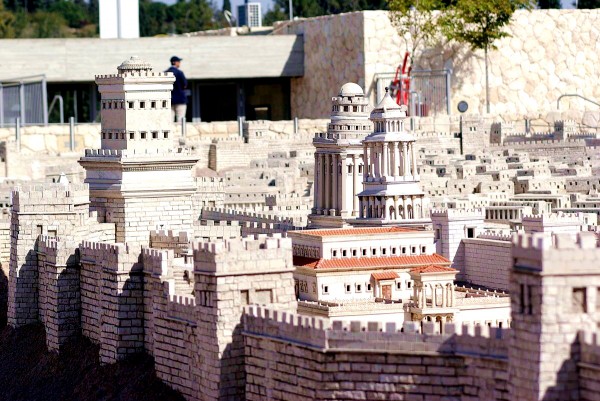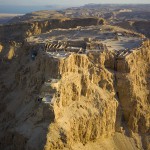Excavations in the Turkish barracks (Kishle) building south of King David’s Citadel have unearthed six layers of archaeological history—from an Ottoman police station later used by the British to walls from the reigns of Hezekiah, the Hasmoneans and Herod. (IAA)
“Jewish members of the pre-state underground militias were incarcerated here by the British and one can still see a map of the Greater Land of Israel scratched by the prisoners onto one of the walls,” states the Tower of David website.
Among the evidence uncovered at King Herod’s Jerusalem palace, perhaps the very palace in which the three Magi (Wise Men or Kings) inquired about the new born king of the Jews, is the oldest of the location’s findings, including the palace’s retaining walls and drainage system.
Herod was a prolific builder. During his reign, he expanded the Temple Mount plateau and rebuilt the second Temple in under two years, with new courts and out-buildings being added over another 80 years. The final remnant of the structure still standing, the Wailing Wall, is a segment of one of the retaining walls begun by Herod for the Temple Mount plateau.
Herod also fortified Masada in the first six years of his reign, building residences for himself on the mountain.
In addition to his lavish palaces, throughout Israel, Herod (37–4 BC) launched several colossal building projects, including the still-standing Enclosure of the Cave of the Patriarchs in Hebron, which is now a flashpoint city for Arab-Jewish relations.

A Jewish child at Hebron’s Cave of the Patriarchs, where Abraham, Isaac, Jacob, Sarah, Rebecca and Leah are buried. Herod the Great built the magnificent structure over the cave to commemorate the site for his Jewish subjects.
A contemporary of Yeshua, Herod’s impact on architecture give a sense of what life was like in the days of Messiah on Earth.
While Herod is responsible for many monumental marvels that are impressive in scale and grandeur even today.
With the newly renovated remnants of Herod’s palace now open to the public, people can come to Jerusalem to experience what existed in antiquity, as well as see the soldiers’ barracks built by the Ottoman Turks in the mid-1800s and used by the British to imprison Jews before the 1948 Independence of Israel.
Also visible is the Hasmonean wall from the 2nd century BCE, from the Maccabi dynasty, as well as the 8th century BCE wall from the time of King Hezekiah, one of the kings of Judah—both available to visit at the expanded Tower of David museum.

Hanukkah, which celebrates the restoration of Jewish worship under the valiant leadership of Judah Maccabee and the miracle of the Temple menorah remaining lit for eight days with a one-day supply of oil, is still celebrated today.
Along with these findings, a mikvah (ritual bath) from the Second Temple era—used before visiting the holy site—was unearthed in the dry moat surrounding David’s Citadel. (MFA)
Israel’s rich archaeological archives attest to the long Jewish connection to the Land of Israel, clearly contrasting claims from Israeli Arab MK Jamal Zahalka (Balad) on Friday that the Jewish Temple is “a myth.” (Israel HaYom)
Further adding fuel to Temple Mount incitement, Zahalka said at a protest of 150 people in the Arab-Israeli town of Kafr Qara, “The [Jewish] temple is a myth and nothing more, while Al-Aqsa mosque exists in the here and now.”
Such erroneous statements blatantly defy the historical record, as well as abundant archaeological evidence of the connection of the Jewish People to the Land of Israel.
“They finished building the temple according to the command of the God of Israel and the decrees of Cyrus, Darius and Artaxerxes, kings of Persia. The temple was completed on the third day of the month Adar, in the sixth year of the reign of King Darius. Then the people of Israel—the priests, the Levites and the rest of the exiles—celebrated the dedication of the house of God with joy.” (Ezra 6:14–16)












